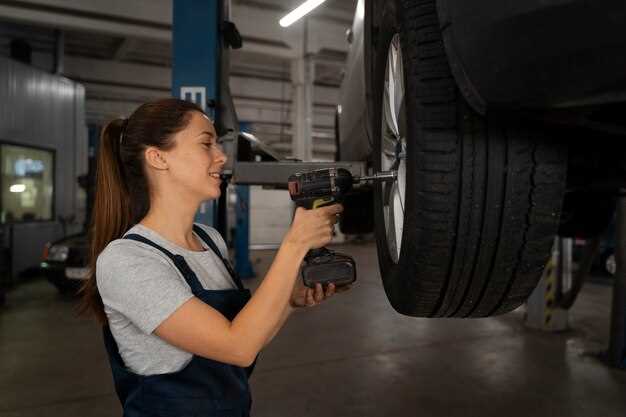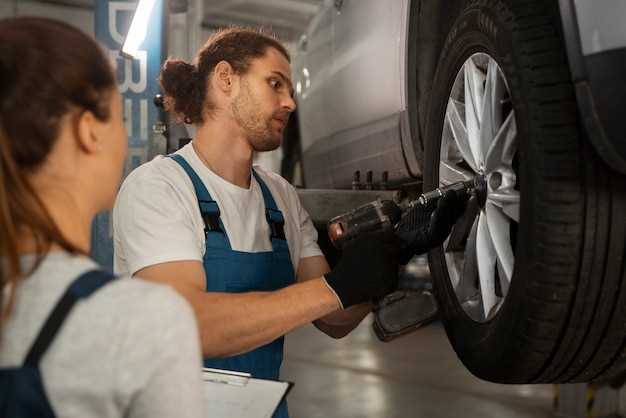
The Importance of Tire Pressure and Inspection

Ensuring the safety of your vehicle begins with regular tire checks. Tires are the only contact point between your car and the road, making their condition crucial for optimal performance and accident prevention. One of the primary aspects of tire maintenance is monitoring tire pressure, which directly affects handling, fuel efficiency, and overall safety.
Under-inflated or over-inflated tires can lead to decreased traction and increased stopping distances. Regularly checking your tire pressure not only helps to maintain safety but also prolongs the lifespan of your tires. It is essential to take the time to inspect tire tread depth and look for any signs of wear or damage during these checks. A proactive approach to tire maintenance is an integral part of responsible driving.
Incorporating these simple yet effective inspection practices into your routine can enhance your driving experience. By prioritizing tire pressure and general tire condition, you help ensure that your vehicle remains safe and reliable, allowing for smooth travels on every journey.
How to Properly Check Tire Pressure Before Driving

Ensuring the safety of your vehicle starts with properly checking the tire pressure before hitting the road. Accurate tire pressure is essential for optimal performance, fuel efficiency, and, most importantly, safety. Here’s how to effectively check your tire pressure.
First, gather the necessary tools. You will need a reliable tire pressure gauge, which can be either digital or manual. Most vehicles have a recommended tire pressure value, often located on a sticker inside the driver’s door or in the owner’s manual. Be sure to check this recommended pressure before proceeding.
Next, ensure that your tires are cold. Ideally, tire pressure should be checked when the vehicle hasn’t been driven for at least three hours. This allows for an accurate reading as heat generated from driving can increase tire pressure.
Start with one tire at a time. Remove the valve cap from the tire you are checking, and firmly press the tire pressure gauge onto the valve stem. Make sure to create a tight seal to prevent air from escaping. Read the pressure displayed on the gauge. If you are using a manual gauge, you may need to press a button to release the reading.
Compare the reading with the recommended tire pressure. If the pressure is lower than recommended, add air until it reaches the correct level. Conversely, if the pressure is too high, release some air until it matches the recommended specification. Remember to check the pressure of all tires, including the spare, if applicable.
Finally, after checking and adjusting all tires, replace the valve caps securely to prevent dirt and moisture from entering. Regularly checking tire pressure enhances driving safety and can prevent uneven tire wear, improving overall vehicle performance.
Common Signs of Inadequate Tire Pressure and Inspection Needs
Maintaining proper tire pressure is essential for vehicle safety and optimal performance. Recognizing signs of inadequate tire pressure can prevent accidents and extend the life of your tires. Here are some common indicators that your tires may need adjustment or inspection:
- Frequent Flat Tires: Experiencing flat tires more often than usual can indicate that your tires are not properly inflated, leading to increased wear and tear.
- Visible Tire Wear: Uneven or excessive tread wear, especially on one side of the tire, suggests improper pressure or alignment. Regular visual inspections can identify this issue.
- Difficulty Handling: If your vehicle feels unstable or difficult to steer, low tire pressure may be the culprit, affecting overall control and safety.
- Higher Fuel Consumption: Under-inflated tires create more rolling resistance, causing your engine to work harder, which can lead to reduced fuel efficiency.
- Tire Pressure Warning Light: Most modern vehicles are equipped with tire pressure monitoring systems that alert you when tire pressure is too low. Always take this warning seriously.
- Bouncy Ride: A car that bounces excessively over bumps may have inadequate tire pressure, resulting in a less stable and comfortable ride.
If you notice any of these signs, it’s important to check your tire pressure and inspect the tires for any additional issues. Regular maintenance, including monitoring tire pressure, ensures safer driving conditions and prolongs the lifespan of your tires.
Recommended Tire Pressure Levels for Different Vehicles

Maintaining the correct tire pressure is crucial for ensuring the safety of any vehicle. Different types of vehicles require varying pressure levels to perform optimally. Below are the recommended tire pressure levels for several common vehicle categories.
Passenger Cars: The ideal tire pressure for most passenger cars typically ranges from 30 to 35 PSI (pounds per square inch). This level ensures balanced handling, improved fuel efficiency, and prolonged tire life. Always consult the vehicle’s owner manual or the sticker found on the driver’s door jamb for specific recommendations.
SUVs and Crossovers: For SUVs and crossovers, the recommended tire pressure generally falls between 32 and 36 PSI. These vehicles often require a slightly higher pressure due to their weight and built for diverse terrains. Regular checks are essential, especially when loaded with cargo.
Light Trucks: Light trucks, including pickups, usually have a recommended tire pressure of 35 to 40 PSI. Given their hauling capabilities, tires must withstand greater loads, making regular inspections critical for safety.
Heavy Trucks and Buses: For heavy-duty trucks and buses, tire pressure can range significantly, from 80 to 100 PSI, depending on the load. This high pressure aids in maintaining the structural integrity of tires under heavy loads, ensuring safe travel on long journeys.
Performance Vehicles: Performance cars often recommend lower pressures, between 28 to 30 PSI, which allows for better grip and handling at high speeds. However, these should be constantly monitored to prevent tire overheating and potential blowouts.
In summary, knowing the correct tire pressure levels for your specific vehicle type is imperative for maintaining safety, enhancing vehicle performance, and prolonging tire lifespan. Regular inspections and adjustments should be part of your regular vehicle maintenance routine.